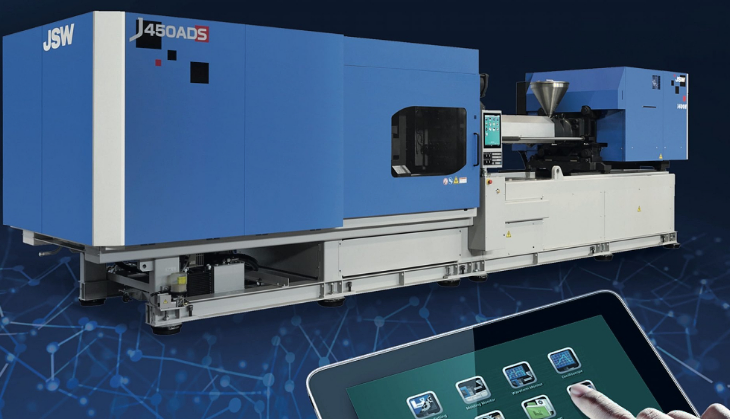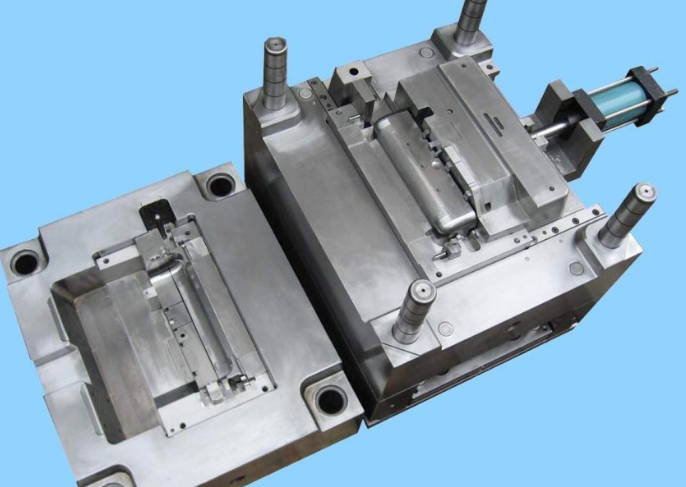Injection molding is the first choice due to its efficiency, cost-effectiveness, and ability to produce complex parts with consistency.
Efficiency and Speed of Injection Molding Process
Comparison of Cycle Times with Other Manufacturing Processes
Injection molding is renowned for its exceptionally fast production speeds compared to other manufacturing processes.

Cycle Time: The average cycle time for injection molding can range from 15 seconds to 120 seconds per part, depending on the complexity and size of the part. This is significantly faster than other processes like CNC machining, where cycle times can be several minutes, or 3D printing, where a single part can take hours to complete.
Batch Production: For large batch production, injection molding’s efficiency is unmatched. For instance, producing 10,000 units of a small component might take only a few days in injection molding, whereas the same quantity could take weeks using alternative methods.
Streamlining Production with Injection Molding
Injection molding streamlines production, making it a go-to choice for mass manufacturing.
Automated Process: The high level of automation in injection molding reduces labor costs and minimizes human error. This automation allows for continuous, 24/7 production with minimal supervision.
Consistency and Reproducibility: The precision of the molds used in injection molding ensures that every part produced is identical to the last, crucial for large-scale production runs where consistency is key.
Material Utilization: Injection molding is efficient in terms of material use, with minimal waste compared to subtractive manufacturing processes.
For more insights, see Injection Molding on Wikipedia.
Cost-Effectiveness of Injection Molding
Analysis of Material and Labor Costs
Injection molding is known for its cost-effectiveness, especially when analyzing material and labor costs. The table below breaks down these aspects:
| Aspect | Detail | Impact |
|---|---|---|
| Material Costs | Injection molding allows the use of a wide range of plastics, with costs varying from $0.10 to $5 per pound depending on the type. Recycled materials can reduce this cost further. | Choosing the right material balances cost without compromising quality. |
| Labor Costs | Highly automated processes reduce the need for manual labor, cutting labor costs by up to 50% compared to less automated manufacturing processes. | Automation leads to significant labor cost savings in large-scale production. |
| Waste Reduction | Minimized material waste due to precise molding and the possibility of recycling excess materials. | Reduces overall material costs and promotes sustainability. |
Economies of Scale in Large Volume Production
The economies of scale in injection molding become particularly apparent in large volume production:
| Volume | Cost Per Part | Total Cost for 100,000 Parts |
|---|---|---|
| Small (1,000 units) | $5.00 | $5,000 |
| Medium (10,000 units) | $2.00 | $20,000 |
| Large (100,000 units) | $0.50 | $50,000 |
Scale Impact: As the production volume increases, the cost per part decreases significantly. This is due to the fixed cost of mold production being spread over a larger number of parts.
Cost Efficiency: For large orders, the per-unit cost can be extremely low, making injection molding an economically viable option for mass production.
Injection molding is a standout choice for manufacturers looking for a cost-effective solution, especially in scenarios requiring high volume production. The process’s efficiency, combined with its ability to produce high-quality parts, makes it an economically sound choice in the manufacturing world.
For more information, visit Injection Molding on Wikipedia.
Precision and Consistency in Product Quality
Achieving Tight Tolerances and Complex Geometries
Injection molding stands out for its ability to achieve tight tolerances and complex geometries in manufactured parts.
Tolerance Levels: Modern injection molding machines can achieve tolerances as tight as ±0.005 inches. This precision is crucial in industries like aerospace and medical devices, where exact specifications are non-negotiable.
Complex Shapes: The versatility of injection molds allows for the creation of intricate and complex designs, which would be difficult or impossible to achieve with other manufacturing methods.
Material Choices: The selection of materials in injection molding, ranging from standard polymers to advanced composites, also plays a significant role in achieving the desired precision. Each material comes with its own set of properties, influencing the final product’s dimensions and tolerance levels.
Consistency Across Large Production Runs
Maintaining consistency in quality across large production runs is another forte of injection molding.
Repeatability: Due to the high level of automation and precision in the molding process, each part produced is virtually identical to the last, ensuring consistent quality even over millions of units.
Quality Control: Advanced quality control measures, such as automated optical inspection, are often integrated into the production line to ensure each part meets stringent quality standards.
Efficiency in Mass Production: The efficiency of injection molding in mass production does not come at the cost of quality. Despite the high speed of production, the quality of each part remains consistent, a key advantage when producing large quantities.
Injection molding is a testament to modern manufacturing’s capability to produce high-quality, precise, and consistent products at scale. This process has become a cornerstone in industries where precision and consistency are paramount.
For further information, explore Injection Molding on Wikipedia.
Material Versatility and Innovation in Injection Molding
Wide Range of Materials and Composites Used
Injection molding is celebrated for its versatility in material usage, accommodating a wide array of plastics and composites.

Plastic Varieties: Common plastics used in injection molding include polyethylene (PE), polypropylene (PP), and polystyrene (PS), with a cost range of $1 to $5 per pound. Each material offers different characteristics in terms of strength, flexibility, and thermal resistance.
Advanced Composites: The use of composites in injection molding, like carbon fiber reinforced plastics (CFRP), has grown. CFRPs offer heightened strength and durability, though at a higher cost, typically $10 to $15 per pound.
Application-Specific Selection: The choice of material in injection molding is dictated by the intended application of the product. For example, consumer electronics often use ABS (Acrylonitrile Butadiene Styrene) for its toughness and aesthetic finish.
Advancements in Eco-Friendly and High-Performance Materials
The field of injection molding is also witnessing significant advancements in eco-friendly and high-performance materials.
Biodegradable Plastics: Recent developments include the use of biodegradable plastics, such as PLA (Polylactic Acid), which offer an environmentally friendly alternative at a slightly higher cost, around $2 to $6 per pound.
High-Temperature Resistant Materials: For applications requiring high thermal resistance, materials like PEEK (Polyether Ether Ketone) are used, capable of withstanding temperatures up to 500°F. PEEK, however, is among the more expensive options, costing up to $40 per pound.
Enhanced Material Properties: Continuous research is leading to materials with enhanced properties, like increased strength, flexibility, or electrical conductivity, broadening the scope of applications for injection molded products.
Injection molding stands at the forefront of manufacturing innovation, with its vast range of material options and continuous advancements in eco-friendly and high-performance materials. This versatility makes it a preferred choice for diverse industries.
For more insights, refer to Injection Molding on Wikipedia.




